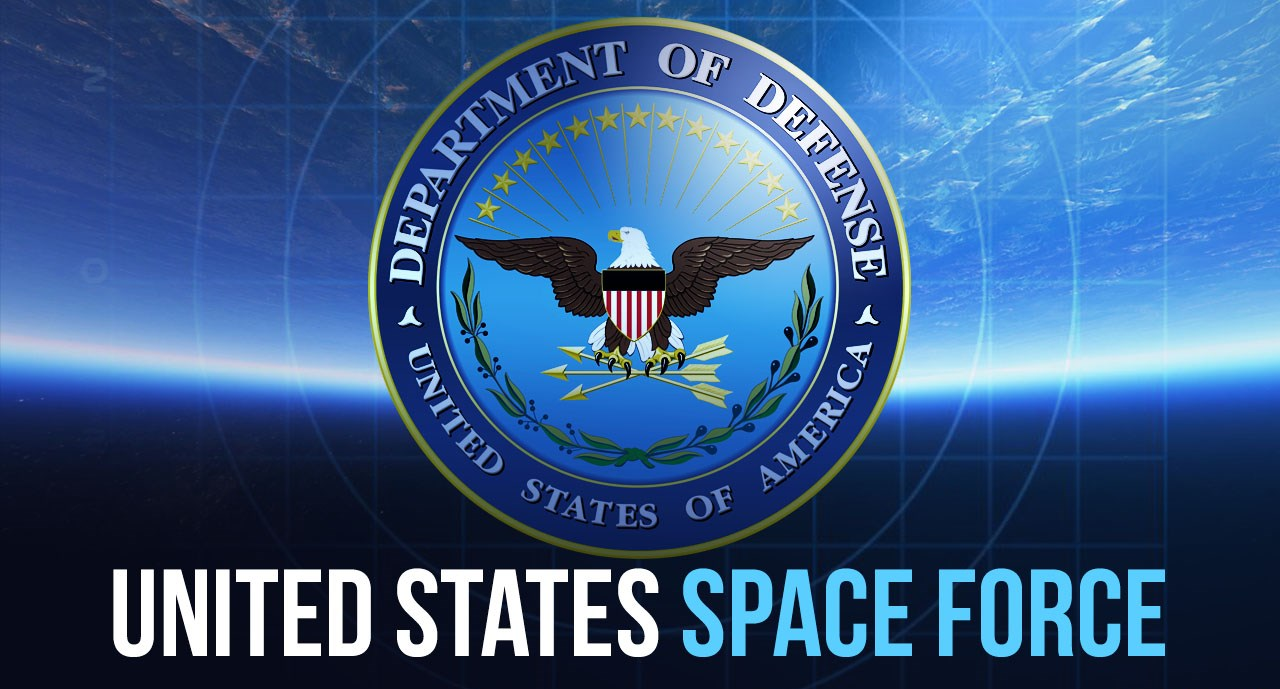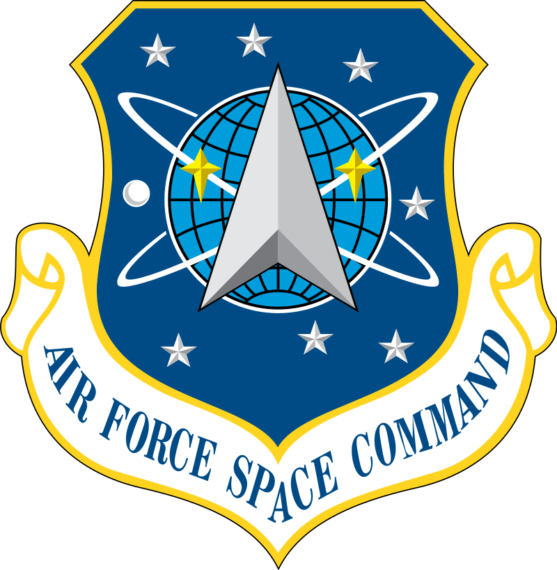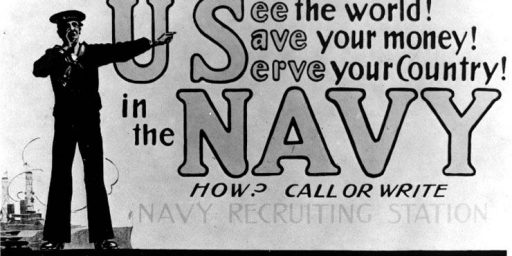Trump Gets His Space Force, Sort Of
President Trump will get his Space force, but it won't exactly be what he wanted when he first proposed that idea.

The President signed an order yesterday setting forward the project of creating a “Space Force,” but it looks like it will be a somewhat stripped-down version of what he had initially called for:
WASHINGTON — President Trump moved forward with his planned United States Space Force on Tuesday, signing an order to begin the process for establishing a new branch of the military that would be dedicated to handling threats in space.
Mr. Trump’s directive orders the Defense Department to “marshal its space resources to deter and counter threats in space” — which the Pentagon already does. The newly created Space Force would be overseen by the Air Force, a concession to congressional critics who say the Pentagon does not need to add to its sprawling bureaucracy.
The president needs congressional approval to create a Space Force; his initial proposal for it to be a separate branch of the military — equal to the Army, the Navy and the Air Force — was met with resistance. Congress and the Pentagon recommended that the force be placed under the Air Force’s purview.
Proponents of a Space Force argue that the Air Force does not pay enough attention to outer space, even as Russia and China are developing antisatellite weapons that could pose a threat to American satellites.
“Although United States space systems have historically maintained a technological advantage over those of our potential adversaries, those potential adversaries are now advancing their space capabilities and actively developing ways to deny our use of space in a crisis or conflict,” the directive said.
Signing the directive at the White House, Mr. Trump cited the United States’ “adversaries — and whether we get along with them or not — they’re up in space.”
More from The Washington Post:
President Trump signed a policy directive Tuesday that laid out a framework for the Space Force he has long sought, but the plan falls short of his initial vision for a new service that is “separate but equal” to the Air Force.
In the document, the president directed the Pentagon to create legislation for Congress that would place the Space Force under the control of the Air Force Department, in a fashion similar to how the Navy Department oversees the Marine Corps. It marks a partial win for senior Air Force officials, who had argued that creating a separate military department — as Trump had stated he wanted — would create unnecessary Pentagon bureaucracy.
Trump signed the directive Tuesday afternoon in the Oval Office while flanked by senior defense officials that included acting defense secretary Patrick Shanahan, Air Force Secretary Heather Wilson and Air Force Gen. Paul Selva, the vice chairman of the Joint Chiefs of Staff. The president said he was “thrilled” to do so, and believes it is just the beginning of an important process.
“Our adversaries … whether we get along with them or not, they’re up in space,” Trump said. “And they’re doing it, and we’re doing it. And that’s going to be a very big part of where the defense of our nation — and you could say ‘offense,’ but let’s just be nice about it and let’s say the defense of our nation — is going to be.”
The plan, which requires congressional approval, could mark the first time the U.S. government has established a new military branch since the National Security Act of 1947 created the Air Force in the wake of World War II. The administration could press for a full Space Force Department in the future, but it is unclear whether or when that would happen.
The move appears to mark a rhetorical and political compromise: While the Trump administration will continue to call the new service the Space Force, it will more closely resemble a previous proposal on Capitol Hill for a smaller Space Corps that does not have a new, separate service secretary appointed by the president. Like the Marine Corps, it will be led by a four-star general who takes a new seat among the Joint Chiefs of Staff, the Pentagon’s top officers.
(…)
Shanahan was expected to sign a memo directing Wilson to establish a team to finalize details of the Pentagon’s space plan, Defense One reported last week, citing a draft memo. The Pentagon also will create a Space Force undersecretary who reports to Wilson and a four-star vice chief of staff who reports to the Space Force service chief, the report said.
Trump created a new position, chief of U.S. Space Command, in December. The four-star officer will oversee the U.S. military’s operations in space, which are currently focused on communications, surveillance and defending U.S. satellites from threats posed both by the elements and by adversaries such as Russia and China.
Goldfein said Tuesday that he sees the creation of the head of Space Command as the most important step. It will allow the services to prepare troops for the Space Command chief to use, he said, similar to how the services prepare troops to be deployed under the control of U.S. Special Operations Command.
“I think the fact that we’re having a national debate on space is really healthy. Really healthy,” Goldfein said. ” . . . We’re the best in the world at space, and our adversaries know it, and they’ve been studying us and investing in ways to take away that capability in crisis or conflict. That, to me, is the problem statement, and we as a nation cannot let that happen.”
All this goes back to mid-June of last year when, seemingly out of the same blue where many of his other ideas have come from, President Trump said that he was ordering the Pentagon to create a so-called “Space Force” as a new branch of the military that, ultimately would require the consent of Congress in addition to overcoming institutional objections inside the Pentagon. Much like his announcement via Twitter in 2017 regarding the repeal of the Obama Administration’s policy regarding open service by transgender Americans, this announcement appeared to have come as something of a surprise to the Pentagon planner at both the military and civilian level. Indeed, the announcement became the butt of many jokes on late-night television as comedians envisioned the idea of some kind of Trumpidian version of Starfleet Command. While Trump’s proposal lacked details, it seemed clear that what he was envisioning was the creation of a completely separate branch of the military with its own military and civilian leadership, it’s own Secretary on a par with the Secretaries of the Army, Navy, and Air Force, and of course its own seat on the Joint Chiefs of Staff.
As James Joyner noted at the time, there was plenty of confusion among defense analysts over what the President meant, how his proposal would be implemented, and whether it was even really necessary given that the United States already has a Space Command under the purview of the Air Force that is responsible for all of the nation’s military-related space activities with the exception of many of the activities of the National Reconnaissance Office and other surveillance agencies. Additionally, polling at the time suggested that the public was skeptical of the idea and reports since June have indicated that the idea faced opposition not just inside the Pentagon but also in Congress, which will need to approve the creation of any new service branch. Despite the order that was signed this week, many of those questions remain to be answered.
In any case, the final order that the President signed marks something of a compromise from what he initially proposed back in June. Instead of being completely independent of the other service branches, the Space Force will serve under the purview of the Department of the Air Force in much the same manner that the Marine Corps exists under the purview of the Department of the Navy. Like the Marines, the Space Force will eventually have its own command structure including commanding General who will serve as a member of the Joint Chiefs of Staff along with the Chiefs of Staff of the Army, Navy, Air Force, Marine Corps, and Coast Guard. In addition to addressing what were apparently strong territorial objections from the Air Force, this type of arrangement will also likely allow the Space Force to essentially become a successor organization of the current Space Command, which has existed since the early 1980s. Indeed, it seems likely that the commanding officers of the new branch will end up being made up largely of those members of the Air Force that currently serve a similar role inside the Space Command.
All of this will need to be approved by Congress, of course, but the fact that all of the relevant players are on board with the current plan makes it likely that it will be approved even though Democrats in the House are likely to give it far more scrutiny than a Republican House might have done. The only question after that will be what kind of uniforms this new “Space Force” will be wearing. Let me start out by recommending no red shirts. Also, I think any future logo should look something like this logo for the Air Force Space Command, which pays a bit of an homage to Star Trek.

Next stop, Starfleet Academy.






Lock S-foils in attack position! Pew! Pew! Pew!
Given that a good argument can be made that an independent air force is a mistake, an independent space force, even in this compromised form, seems a real stretch.
I hope when the dust settles the existing command structures remain in place and this ends up just a bunch of air force guys in new jackets.
Well, in 40 or 50 years, there will be a cloud of toxic radioactive debris surrounding Earth and serving to protect us from the interstellar raiding parties from Zoltar. I guess that’s a plus.
Sort of…
As a member-emeritus of the Death Panels, I expect to automatically become a Commander in the Space Force*.
* Space Force must always be spoken in the voice from the cartoon, Space Ghost.
https://www.youtube.com/watch?v=7FRW2bOqvzI
@Just nutha ignint cracker:
Will it be in the shape of Individual-1’s comb-over?!?!?
Let’s hope that isn’t as true as it might be. The Navy has complete control over the Marine Corps’s budget, and little cultural investment in its mission. It’s already true that the Air Force is run by pilots for pilots; we’ll see if elevating Space Command to something analogous to the USMC will make things better.
@Daryl and his brother Darryl: That would be possible, but would also leave an area where comb-overs’ face would be vulnerable to attack, unfortunately.
@gVOR08:
I’ve read the Army complain the Air Force cares little about front line ground attack and other forms of infantry support, preferring to focus instead on strategic bombing well behind the lines.
The Air Force complains the Army is not up to the job of battlefield air defense, and often fires on friendly aircraft.
The Army owns and operates attack and reconnaissance helicopters, but it’s limited to what kind of fixed-wing aircraft it can have.
There have been suggestions to let the Army operate ground attack and battlefield support aircraft, like the A-10 (is that still around?), and let the air Force take charge of air defenses. There have also been suggestions to standardize the height off the ground of car bumpers, since at least the 1960s.
@Kathy: To be fair, that’s a complex problem. Car bumpers probably can’t be standardized for height while off-road vehicles are street legal because fixing the bumper to the grille would interfere with airflow to the engine and would be nearly useless attached to the hood of the car–not to mention that they would snap off too easily.
@Just nutha ignint cracker:
Well, you could exclude off-road vehicles.
The thing is that it’s not a huge deal, even if it seems that way when you break an expensive headlight while parking. But not big enough, even so, to wrangle scores of manufacturers from many countries, and get them to agree on something.
Speaking of Space, Israel just sent a probe on its way to the Moon, via a SpaceX Falcon 9.
The probe’s Hebrew name, “Beresheet,” translates as “Genesis.”
Don’t be too surprised if the Moon begins to turn green in a few days 😛
@Kathy: Car bumper height has been satndardized for decades. The issue is trucks which includes SUVs.
As an old sports car guy, bumper height on SUVs, which can override both bumpers and side impact bars, is just one of many things that mark SUVs as
an abomination amongdeplorable vehicles. People buy them thinking it makes them safer, at the expense of everyone else’s safety. They’re an expression of the standard conservative ethos of I got mine, f you. Quoting a car magazine – no one ever bought an SUV because they were confident in their driving skills.Too late in the thread to start an argument about SUVs, but what the heck.
@gVOR08:
People don’t understand car safety. that’s deplorable, considering we’ve had cars for over a century now.
A typical example is the belief that if the car is relatively undamaged in a crash, that means the people inside will be as well. The corollary is a complaint of how modern cars crumple even in low speed crashes.
Fact is the crumpling absorbs kinetic energy from the crash rather tan transmitting it. If the car is largely undamaged, you will absorb that energy. meaning your chances of sustaining a major injury even in a slow speed crash are much higher.